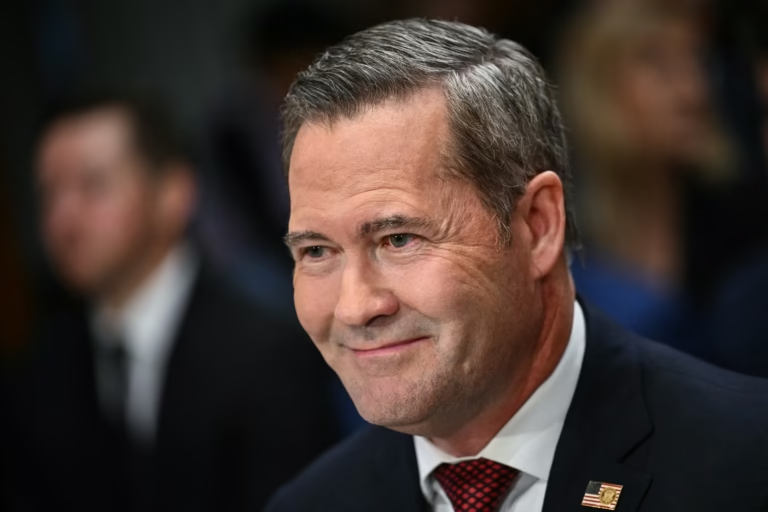
High-Stakes Diplomatic Push Aims to End Gaza Conflict
President Donald Trump welcomed Qatar’s Prime Minister Sheikh Mohammed bin Abdulrahman Al-Thani to the White House on Wednesday, marking a significant escalation in diplomatic efforts to secure a lasting ceasefire between Israel and Hamas in Gaza.
The official meeting, which included a formal dinner, centered on advancing a comprehensive 60-day truce framework backed by the United States. This proposed agreement would establish a phased approach to hostage releases while facilitating strategic Israeli military withdrawals from contested areas.
Expanding Diplomatic Horizons Beyond Gaza
The discussions between Trump and Sheikh Mohammed extended beyond the immediate Gaza crisis to encompass broader Middle Eastern stability concerns. According to reporting by Axios journalist Barak Ravid, the leaders explored potential pathways to restart nuclear negotiations with Iran, signaling the administration’s commitment to addressing multiple regional security challenges simultaneously.
Qatar has emerged as a crucial mediator in these complex negotiations, with the Gulf nation’s leadership facilitating indirect talks between Israeli and Hamas representatives in Doha since July 6. This diplomatic channel has become increasingly vital as direct communication between the conflicting parties remains impossible.
Cautious Optimism from Key Negotiators
U.S. Special Envoy Steve Witkoff, who has become a central figure in the ceasefire discussions, expressed measured hope during remarks at MetLife Stadium during the FIFA Club World Cup final. Speaking to reporters on Sunday, Witkoff indicated that meaningful progress could emerge by week’s end, following productive meetings with senior Qatari officials.
“The goal is peace with security, and we are pushing hard,” President Trump emphasized during recent comments at Joint Base Andrews. “Gaza—we are talking, and hopefully we’re going to get that straightened out over the next week. Let’s see what happens.”
Witkoff specifically acknowledged the mediation efforts of both Egypt and Qatar, recognizing their essential roles in maintaining communication channels between the opposing sides.
Complex Framework for Sustainable Peace
The proposed ceasefire agreement under consideration involves intricate provisions designed to address the concerns of all parties involved. The 60-day cessation of hostilities would coincide with the staged release of Israeli hostages currently held by Hamas, many of whom were taken during the devastating October 7, 2023, attack on southern Israel.
This framework would also enable Israeli forces to withdraw from specific areas within Gaza while significantly increasing humanitarian aid deliveries to civilians who have endured months of conflict. The phased approach aims to build confidence between the parties while addressing immediate humanitarian needs.
Persistent Challenges and Competing Demands
Despite the intensified diplomatic efforts, significant obstacles remain in reaching a comprehensive agreement. Hamas leadership continues to demand complete Israeli military withdrawal from Gaza territory, alongside unrestricted humanitarian aid access to the region’s population.
Israeli officials, however, maintain that any ceasefire arrangement must preserve their nation’s right to resume military operations if security threats resurface. This fundamental disagreement over future military capabilities represents one of the most challenging aspects of the negotiations.
Current Israeli intelligence estimates suggest that approximately 50 hostages remain in Hamas custody, with 20 believed to be alive and 30 either confirmed dead or presumed deceased. These numbers underscore the human stakes involved in the ongoing negotiations.
Broader Regional Economic Partnerships
President Trump’s diplomatic agenda extended beyond the Gaza crisis to include meetings with Bahrain’s King Hamad bin Isa Al Khalifa and Crown Prince Salman bin Hamad Al Khalifa. These discussions focused on a substantial $17 billion package of bilateral business agreements between American and Bahraini companies.
The economic partnership includes plans for establishing direct commercial flights between Manama and New York City, potentially strengthening trade relationships and cultural exchanges between the two nations.
Learning from Previous Diplomatic Efforts
The current negotiations take place against the backdrop of a collapsed ceasefire agreement from March, which initially showed promise but ultimately failed to achieve lasting peace. That previous arrangement had successfully facilitated the release of dozens of Israeli hostages in exchange for more than 1,000 Palestinian security prisoners, while also expanding aid shipments to Gaza.
However, the March agreement deteriorated amid mutual accusations of violations, leading to renewed Israeli military operations in the region. Understanding these past challenges has informed the current diplomatic approach, with negotiators working to create more robust verification and compliance mechanisms.
Qatar’s Complex Role as Mediator
Qatar’s position as a mediator continues to generate discussion among various stakeholders. While some Israeli officials and U.S. lawmakers view the Gulf nation’s historical ties to Hamas as potentially problematic, Qatar’s unique relationships with multiple parties have made it an indispensable facilitator in these negotiations.
President Trump reinforced this diplomatic channel through a telephone conversation with Qatar’s Emir, Sheikh Tamim bin Hamad Al Thani, on Monday, demonstrating the administration’s commitment to maintaining momentum in the peace process.
Looking Toward Diplomatic Breakthrough
While the path to a permanent resolution remains uncertain and complex, Wednesday’s high-level meetings represent a significant diplomatic investment by the White House. The administration’s determination to reclaim American leadership in Middle Eastern diplomacy could potentially yield a breakthrough in one of the world’s most enduring conflicts.
The intensive diplomatic schedule reflects broader strategic objectives beyond immediate ceasefire arrangements, encompassing regional stability, economic partnerships, and long-term security cooperation among Middle Eastern nations.
About The Author
Discover more from Faith & Freedom News - FFN
Subscribe to get the latest posts sent to your email.






